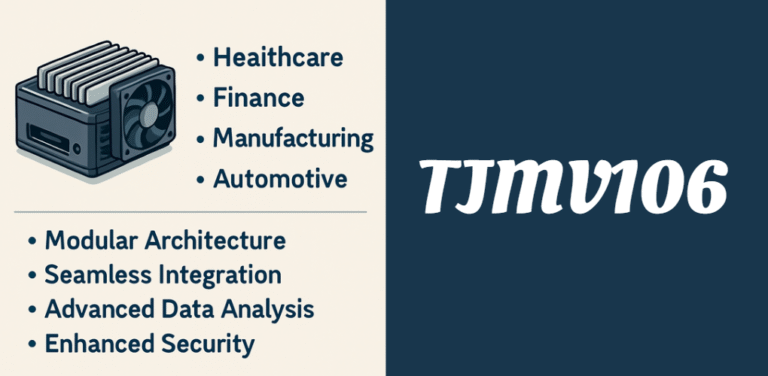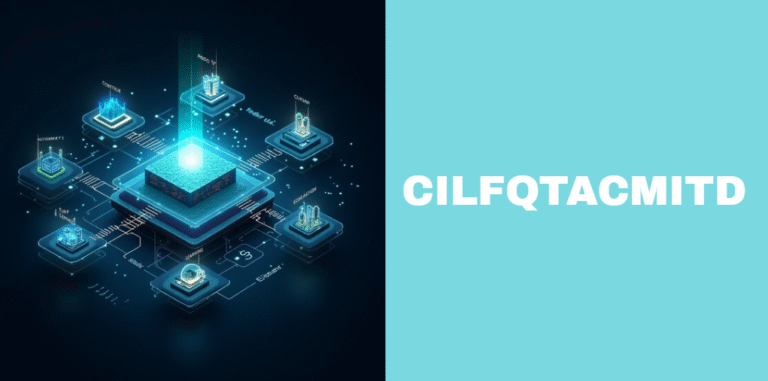A Comprehensive Guide to Understanding FALS-17-001942.3: Significance, Applications and Future Trends
In today’s data-driven world, identifiers play a crucial role in ensuring the proper management and tracking of information. FALS-17-001942.3 is one such unique identifier used in various technical, scientific, and organizational contexts.
Understanding the meaning and importance of identifiers like FALS-17-001942.3 can enhance how we manage and interpret data. In this article, we will explore the components of this identifier, its applications across industries, and its benefits and challenges.
Unique identifiers are widely used across industries to tag data, resources, or versions of a product. These identifiers provide a structured way to access and track the information, ensuring clarity and avoiding confusion. FALS-17-001942.3 is no different, offering a systematic approach to organizing records in databases, research papers, software development logs, and more.
Decoding FALS-17-001942.3
To understand the significance of FALS-17-001942.3, we need to break it down and analyze its structure. This identifier follows a standardized format that can be interpreted in various ways depending on its use. Below is a closer look at each part of the identifier:
- FALS: This part may indicate the system or registry where the identifier is stored. It could stand for a specific organization, software system, or a research framework that governs the use of the identifier.
- 17: The number “17” could refer to the year of creation, version, or an index. For example, it could mark the identifier’s introduction in 2017 or indicate its version number, suggesting that it is part of a larger set of identifiers.
- 001942: This is likely a unique sequence or entry number within the FALS system, which helps distinguish it from other identifiers. This number helps pinpoint the exact record associated with it.
- .3: The “.3” at the end typically indicates a revision or version number. It suggests that FALS-17-001942.3 has gone through at least three revisions or updates, making it a refined and updated entry.
In summary, FALS-17-001942.3 is a unique identifier that combines these components to create a detailed and traceable reference.
Applications Across Industries
Role in Scientific Research and Documentation
In scientific research, managing data and references is critical. Researchers often use identifiers like FALS-17-001942.3 to organize datasets, research papers, or experimental results. These identifiers enable easy tracking and referencing, ensuring that different teams can access the same data set without confusion.
In journals, research papers, and academic databases, unique identifiers are essential for citing specific work and preventing errors in referencing.
Usage in Software Development and Version Control
For developers, version control is crucial to ensure that the latest changes to a codebase are tracked and can be rolled back if necessary. FALS-17-001942.3 may be used as a versioning identifier for software updates, allowing teams to distinguish between different stages of a project.
This makes it easier for developers to manage different iterations and prevent errors caused by outdated versions.
Importance in Patent Filing and Intellectual Property
When filing patents, it is important to maintain an organized system for identifying and tracking each patent. FALS-17-001942.3 could serve as a unique identifier for a specific intellectual property asset, ensuring that it is distinguishable from other patents or filings in the same category.
Such identifiers are used to link patents to their respective owners and applications, facilitating smooth legal processes.
Integration in Academic and Technical Libraries
Universities, research institutions, and technical libraries also use identifiers like FALS-17-001942.3 to catalog and index a vast array of academic papers, articles, and technical documents. These systems enable researchers and students to easily search for materials related to their field of study.
Technical Specifications
Standardization Protocols and Naming Conventions
For identifiers like FALS-17-001942.3 to be effective, they need to adhere to standardized protocols and naming conventions. These protocols ensure consistency across platforms, databases, and organizations.
Using a consistent format makes it easier to share and access information across different systems, ensuring that data is correctly labeled and can be traced back to its source.
Database Structuring and Metadata Association
In databases, each entry linked with an identifier like FALS-17-001942.3 is typically associated with metadata that provides additional information about the data, such as the source, date of creation, or modification history. This structured association ensures that every record is comprehensive and easy to interpret.
Compatibility with Data Retrieval Systems
A well-organized identifier like FALS-17-001942.3 is compatible with various data retrieval systems, such as search engines, content management systems (CMS), or other indexing tools. This compatibility ensures that users can quickly locate the exact piece of information they need without sifting through irrelevant data.
Benefits of Utilizing Structured Identifiers
Enhanced Data Traceability and Clarity
One of the primary benefits of using FALS-17-001942.3 is that it enables easy tracking of data. Whether it’s a research paper, software update, or patent, each unique identifier provides a traceable link back to the source. This enhances clarity by reducing the likelihood of confusion and errors.
Improved Collaboration Across Platforms
Structured identifiers are crucial in collaborative environments where multiple teams or organizations need to access shared data. With FALS-17-001942.3, teams can work seamlessly, knowing that everyone is referring to the same piece of data. This improves cross-platform collaboration and streamlines workflows.
Efficient Version Tracking and Management
FALS-17-001942.3 may also be used for version tracking, ensuring that updates and changes are logged in an organized manner. For example, in software development, each revision of a product can be tagged with a unique identifier, allowing developers to track improvements and troubleshoot issues more efficiently.
Streamlined Data Retrieval Processes
Using an identifier like FALS-17-001942.3 allows systems to automatically pull up relevant data, eliminating the need for manual searches. This makes the process faster and more efficient, which is especially important when dealing with large amounts of data.
Challenges and Considerations
Potential for Over-Standardization
One concern with using standardized identifiers like FALS-17-001942.3 is the risk of over-standardization. While consistency is essential, it is also important to ensure that these systems remain flexible and can accommodate new and emerging data types or technologies.
Issues with Human Readability and Interpretation
Another potential challenge is the difficulty in reading and interpreting complex identifiers. While FALS-17-001942.3 may be easy for computers to process, humans may find it harder to understand, which could create confusion, especially in non-technical environments.
Security Concerns and Data Sensitivity
As with any system that manages data, there is always the risk of unauthorized access or data breaches. Ensuring that identifiers like FALS-17-001942.3 are securely stored and managed is essential to protect sensitive information.
Necessity for Comprehensive Documentation
Finally, having a robust system of documentation is essential when using identifiers like FALS-17-001942.3. This documentation should include details about what each identifier represents, how it is structured, and how it should be used. Without proper documentation, there is a risk of misusing the identifier and losing valuable data.
Future Perspectives
Evolution Towards Semantic and AI-Driven Identifiers
The future of identifiers like FALS-17-001942.3 may include the integration of artificial intelligence (AI) and semantic technologies. AI can help automate the assignment and tracking of identifiers, making data management even more efficient.
Integration with Blockchain for Immutable Tracking
Blockchain technology, known for its immutability and transparency, could play a significant role in the future of identifiers like FALS-17-001942.3. By integrating blockchain, these identifiers can be made tamper-proof, ensuring that data cannot be altered without leaving a trace.
Cross-Platform Synchronization and Interoperability
As businesses and organizations increasingly use different systems, cross-platform synchronization and interoperability will become more important. Future iterations of identifiers like FALS-17-001942.3 could ensure that data can be seamlessly shared between disparate systems, improving collaboration and reducing inefficiencies.
Conclusion
In conclusion, FALS-17-001942.3 is a crucial identifier that plays an important role in data management across various industries, including scientific research, software development, and intellectual property management. Its structured format ensures that data is easily tracked, accessed, and interpreted, promoting efficiency and clarity.
However, as with any system, challenges such as over-standardization and security concerns must be addressed to maximize its potential. By looking toward the future, it is clear that identifiers like FALS-17-001942.3 will continue to evolve, incorporating new technologies like AI and blockchain to enhance their functionality.
Recommended Articles
What is 1-888-541-8306? Full Guide to Toll-Free Customer Support & Safe Usage
Wizards Black Jerseys Mahmood NBA 2K: A Deep Dive into Culture, Style and Gaming
Kwal Paint 961-240: The Ultimate Guide to a Superior Paint Finish
Everything You Need to Know About the Filtro de Aire K0R-TEC1444: Features, Benefits and Usage Guide






